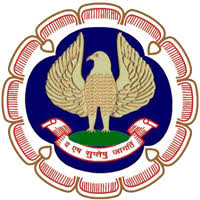
CA Foundation - Syllabus
Chartered Accountants Foundation Exam
Pen & Paper Mode
CA CPT Syllabus 2022: Check out the Subject-Wise syllabus here
Updated On - January 21 2022 by Divyansh K
CA CPT Syllabus 2022: The Common Proficiency Test (CPT) is an introductory exam for Chartered Accountancy students. The CA CPT Exam attracts lakhs of candidates from all across India because it is a national level exam. The Institute of Chartered Accountants organises it. Accounting, Mercantile Laws, General Economics, and Quantitative Aptitude are the four disciplines included on the test, and they are used to assess basic understanding in these areas. Chartered Accountant Common Proficiency Test can be taken by anyone who has completed Class X or equivalent. After passing Class XII or equivalent, a candidate is eligible for the CA CPT Examination.
CA CPT Syllabus 2022
Every CPT exam preparation begins with reading and comprehending the curriculum for the exam in question. The ICAI creates the CA CPT exam syllabus, which includes all of the important topics and substances that candidates must learn in order to pass the exam. Fundamentals of Accounting, Mercantile Laws, General Economics, and Quantitative Aptitude are all part of the CA CPT syllabus for 2022.
This article explains the CA CPT subjects syllabus, including themes and contents. Changes to the CPT syllabus will be posted here.
Continue reading to learn more about the CPT exam's detailed syllabus.
The CA C have 2 sections for 200 marks with 4 sessions. The CA CPT exam details syllabus is as follows.
| Sessions | Sections | Marks |
Session I | Section A: Fundamentals of Accounting | 60 Marks |
| Section B: Mercantile Laws | 40 Marks | |
Session II | Section C: General Economics | 50 Marks |
| Section D: Quantitative Aptitude | 50 Marks |
Candidates can find various CPT reference books based on the CA CPT latest syllabus to crack the CPT 2022 exam. The CA CPT course syllabus is explained below in detail.
CA CPT Exam Session I
The first session for the CA CPT exam consists of two sections. This session is for 2 hours. The total mark for this section is 100.
Section A: Fundamentals of Accounting (60 Marks)
The primary goal of the Fundamentals of Accounting part is to build conceptual knowledge of the financial accounting system's fundamentals. This section covers subjects like bank reconciliation statements, final accounts for sole proprietors, and so forth.
Below is a list of the topics and their contents.
| Topics | Contents |
| Theoretical Framework |
|
| Accounting Process |
|
| Inventories |
|
| Depreciation Accounting |
|
| Accounting for Special Transactions |
|
| Partnership Accounts |
|
| Introduction to Company Accounts |
|
Section B: Mercantile Laws (40 Marks)
Mercantile Laws are section B of the session I of the CP CAT test. This section is designed to assess your general knowledge of mercantile law.
- Sections 1 to 75 of the Indian Contract Act, 1872: An overview of the basic nature of the contract, consideration, other key parts of a legal contract, contract performance, and contract breach.
- The Sale of Goods Act of 1930: Formation of the sale contract – Conditions and Warranties – Transfer of ownership and delivery of goods – Unpaid seller and his rights
- The 1932 India Partnership Act: General Partnership Characteristics – Partner Rights and Responsibilities – Firm Registration and Dissolution
CA CPT Exam Session II
The CP CAT exam syllabus comprises two components in the second session. This session will last 2 hours and will be worth a total of 100 points.
Section C: Economics General (50 Marks)
The CP CAT Economics course ensures a fundamental understanding of economic systems, as well as individual and organisational economic behaviour. The following are the main topics and contents of this session.
| Micro Economics | |
| Introduction to Micro Economics |
|
| Theory of Demand and Supply |
|
| Theory of Production and Cost |
|
| Price Determination in Different Markets |
|
| Indian Economic Development | |
| Indian Economy – A Profile |
|
| Select Aspects of Indian Economy |
|
| Economic Reforms in India |
|
| Money and Banking |
|
Section D: Quantitative Aptitude (50 Marks)
The main goal of the Quantitative Aptitude CPT course is to assess students' understanding of fundamental ideas in mathematics and statistics, as well as their application of those concepts using quantitative methods. The topics included in the CPT Aptitude curriculum are mentioned below.
- Ratio and Proportion, Indices, Logarithms
- Equations
- Inequalities
- Simple and Compound Interest including Annuity ─ Applications
- Basic Concepts of Permutations and Combinations
- Sequence and Series – Arithmetic and Geometric Progressions
- Sets, Functions, and Relations
- Limits and Continuity ─ Intuitive Approach
- Basic Concepts of Differential and Integral Calculus (excluding Trigonometric Functions)
- Statistical Description of Data
- Textual, Tabular & Diagrammatic Representation of Data.
- Frequency Distribution.
- Graphical Representation of Frequency Distribution – Histogram, Frequency Polygon, Ogive
- Measures of Central Tendency and Dispersion
- Correlation and Regression
- Probability and Expected Value by Mathematical Expectation
- Theoretical Distributions Binomial, Poisson, and Normal.
- Sampling Theory
- Index Numbers.
Form Start Date:
03 Feb 2023
Form End Date:
03 Mar 2023
The last date to submit the form was on 03 Mar 2023
Browse Other ExamsExamination Date (Online):
24 Jun - 30 Jun 2023
Application Fees:
₹ 1,500

Comments